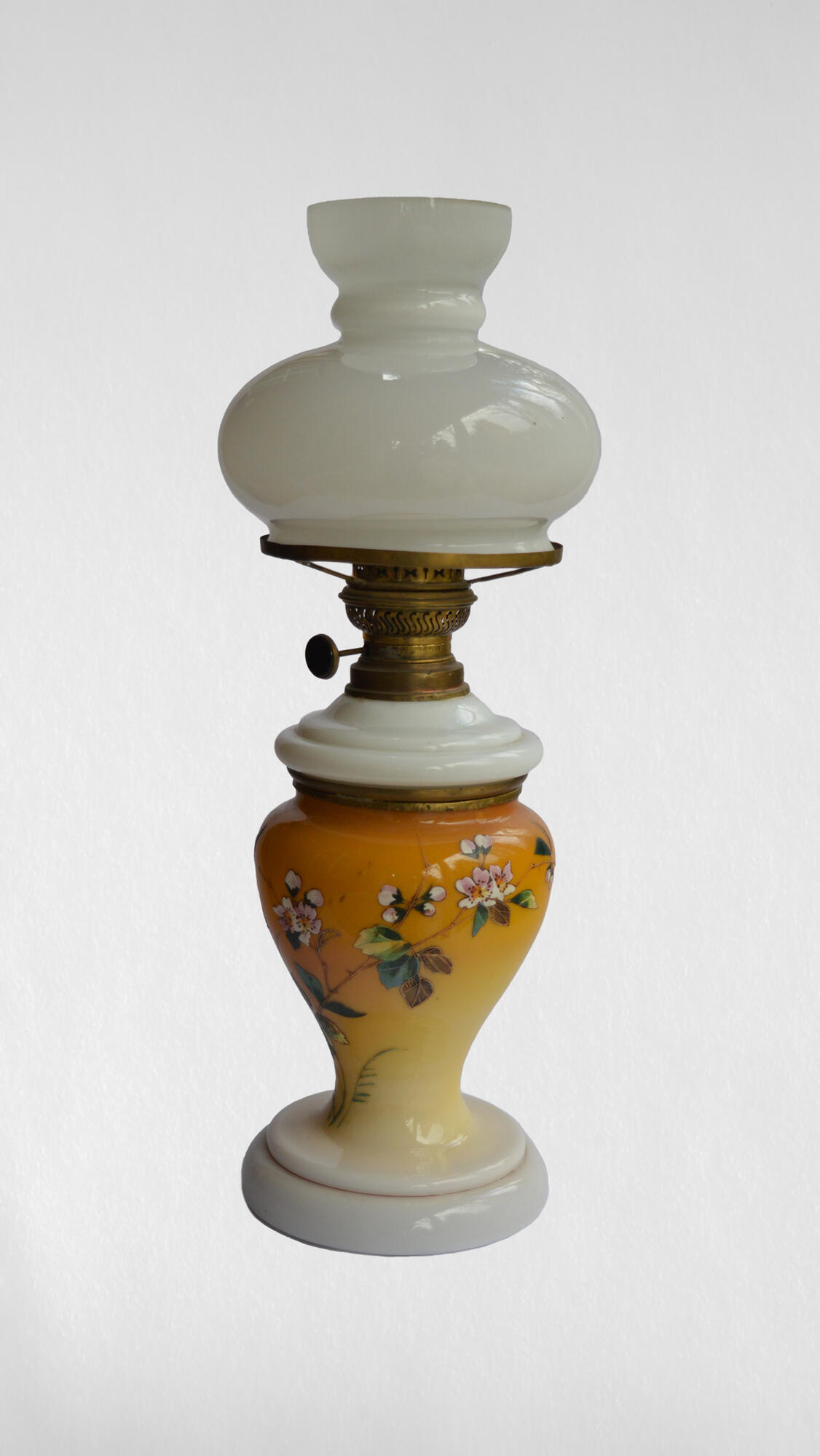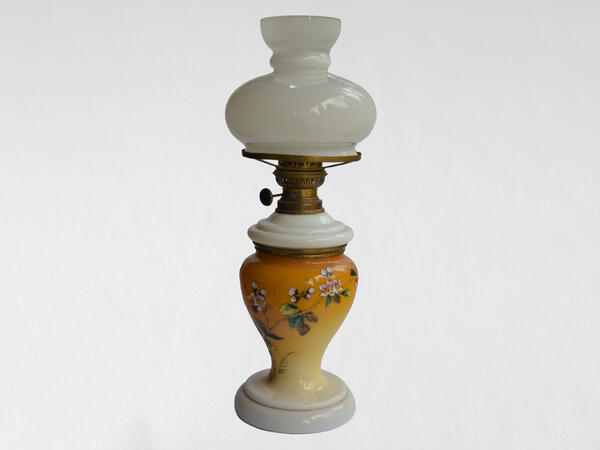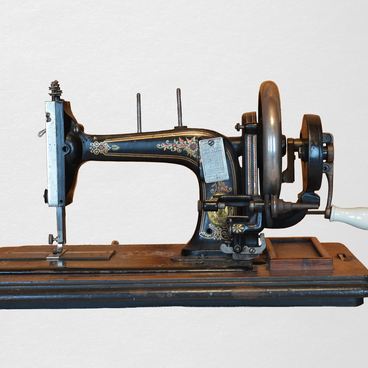The museum’s collection includes a lamp from the early 20th century. It was produced in Warsaw, the birthplace of the device. On the head of the wick adjusting key there is the stamp of the manufacturer, the Joint Stock Company of the United Lamps Factories, Burners and Metal Items ‘Brunner Brothers, G. Schneider and R. Ditmar’.
Kerosene lamps were invented by Polish scientist Ignacy Lukasiewicz in 1853. He was a pharmacist, patron of the arts, and industrialist, and founded the world’s first oil refinery. Lukasiewicz’s inventions and activities made him one of the most famous people in Poland.
A new type of lighting fixture conquered all of Europe shortly after its release. The impetus for the spread of kerosene lamps was primarily the availability of fuel — kerosene was cheaper than candles or oil, and such lamps burned brighter. In the second half of the 19th century, kerosene lamps began to be used in Russia. They appeared in the country in 1861, and a year later superseded all other lighting fixtures.
By design, kerosene lamps are close to oil lamps. The difference is that the burner in kerosene lamps is placed above the tank because kerosene, unlike oil, is a light fuel and is well absorbed by the wick. The duration and intensity of work of the kerosene lamps depended on the quality of the kerosene.
The craftsmen very successfully adapted large porcelain vases for the lamps of the new design. The body of the vase concealed a metal tank of fuel, a burner protruded from the corolla, and an additional metal structure supported a glass lampshade that softened the bright harsh light. The same role was played by frosted or white glass spheres with two holes, which were put on the lamp glass. Porcelain vases for lamps were produced by the Imperial Porcelain Factory and private porcelain factories.
The metal parts of the lamp were made of bronze, less often — of gilt and silver. The creation of new models and shapes of lamps were handled by different specialists: artists drew sketches, factories did the casting of new forms and details, and the process of creating the lamp was completed by assembling all the parts into a single design.
The demand for kerosene lamps in both urban and rural areas continued until the early 20th century. Then new light sources powered by electric current gradually replaced all other lighting devices.
Kerosene lamps were invented by Polish scientist Ignacy Lukasiewicz in 1853. He was a pharmacist, patron of the arts, and industrialist, and founded the world’s first oil refinery. Lukasiewicz’s inventions and activities made him one of the most famous people in Poland.
A new type of lighting fixture conquered all of Europe shortly after its release. The impetus for the spread of kerosene lamps was primarily the availability of fuel — kerosene was cheaper than candles or oil, and such lamps burned brighter. In the second half of the 19th century, kerosene lamps began to be used in Russia. They appeared in the country in 1861, and a year later superseded all other lighting fixtures.
By design, kerosene lamps are close to oil lamps. The difference is that the burner in kerosene lamps is placed above the tank because kerosene, unlike oil, is a light fuel and is well absorbed by the wick. The duration and intensity of work of the kerosene lamps depended on the quality of the kerosene.
The craftsmen very successfully adapted large porcelain vases for the lamps of the new design. The body of the vase concealed a metal tank of fuel, a burner protruded from the corolla, and an additional metal structure supported a glass lampshade that softened the bright harsh light. The same role was played by frosted or white glass spheres with two holes, which were put on the lamp glass. Porcelain vases for lamps were produced by the Imperial Porcelain Factory and private porcelain factories.
The metal parts of the lamp were made of bronze, less often — of gilt and silver. The creation of new models and shapes of lamps were handled by different specialists: artists drew sketches, factories did the casting of new forms and details, and the process of creating the lamp was completed by assembling all the parts into a single design.
The demand for kerosene lamps in both urban and rural areas continued until the early 20th century. Then new light sources powered by electric current gradually replaced all other lighting devices.



